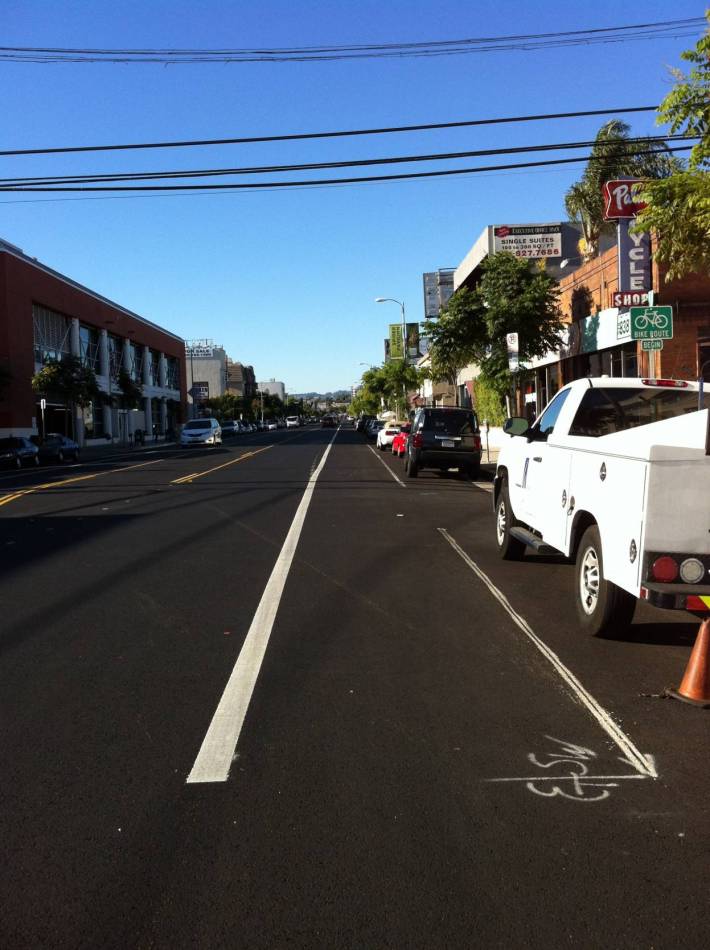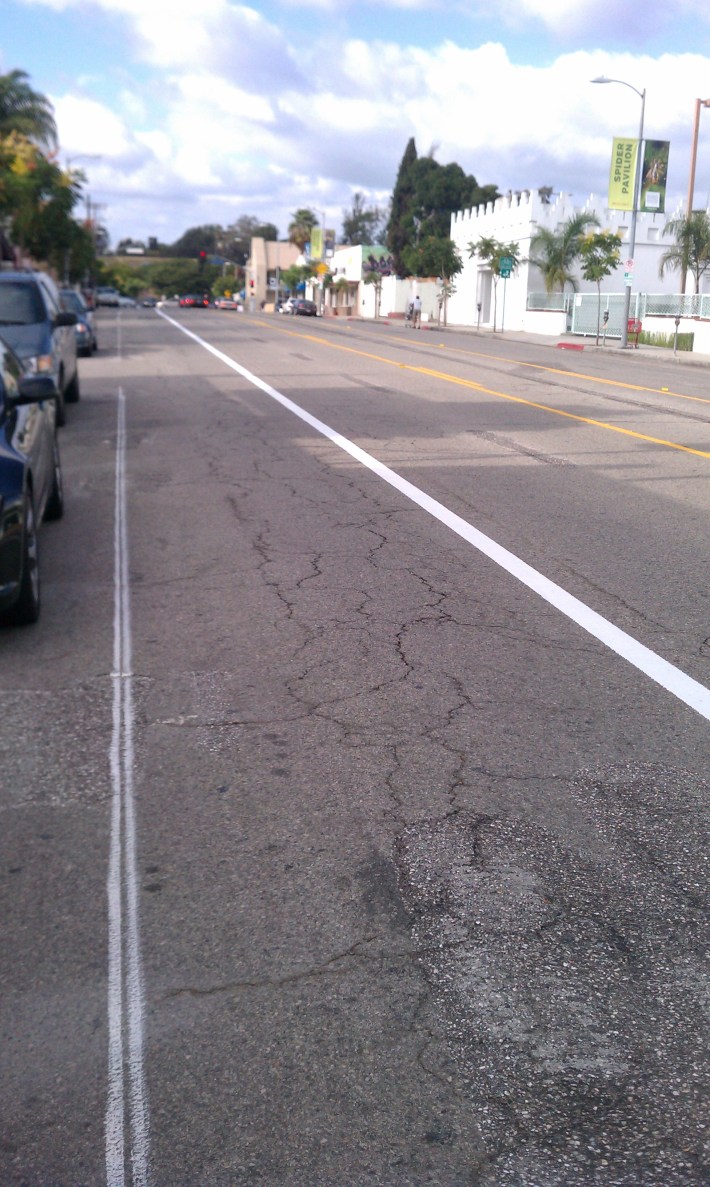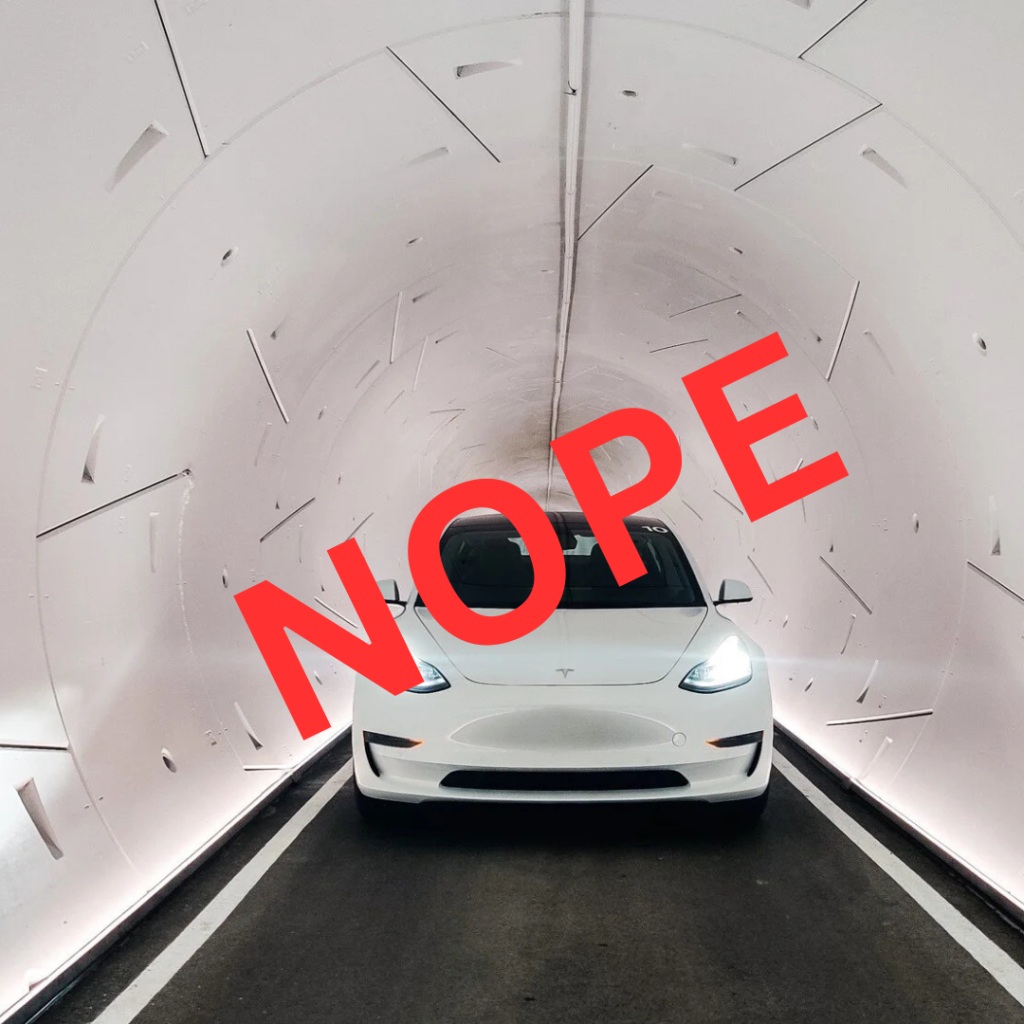The buzz started on Monday: an alert reader (and Wilshire bike commute champion) notified Streetsblog that the sharrows on Motor Avenue disappeared between Venice Boulevard and National Boulevard, a three quarter mile stretch of mixed residential and commercial development, during a recent repaving.
Nonetheless, the mood was optimistic. Initial road striping after the repave hinted that the four lane street would be shrunk to two lanes with bike lanes on each side of the street.
Yesterday it became official: Motor Avenue is on a diet.
With the support of Councilman Paul Koretz and the Palms Neighborhood Council, LADOT and the Bureau of Street Services quickly re-striped Motor Avenue this week.
"Los Angeles has made enormous strides in becoming a bike friendly city over just the last few years," writes Koretz. "We worked with our Bureau of Street Services and Department of Transportation to not only repave Motor Avenue but add a long-planned and needed bike lane to the street. Every day, we are coming closer to having complete streets that support motorists, bicyclists and pedestrians alike."
Jonathan Weiss, a member of the city's official Bicycle Advisory Committee, explains, "The Bike Plan requires the Bureau of Street Services to coordinate with LADOT so that after a repavement job is done they don't just put in the old striping if the street is in the plan for bike lanes."
Homeowners along the mostly-residential section Motor Avenue have long complained that the street is heavily used as a cut-through by commuters seeking to avoid more crowded major streets, such as Overland Ave. In other words, it's unlikely that--despite the small surprise in the timing of the diet--it will become "another Wilbur."
Interestingly, the repaving that triggered the road diet doesn't extend for the entire length of the diet. The road has not been repaved between Palms and National, but BOSS grounded out the old road markings, including sharrows, and replaced them with the bike lanes. This section of Motor Ave. will not be repaved until a bridge over at Exposition is rebuilt, though many commuters contend the road needs a new surface today. Bridge construction should begin by the end of this month and could take two years.








